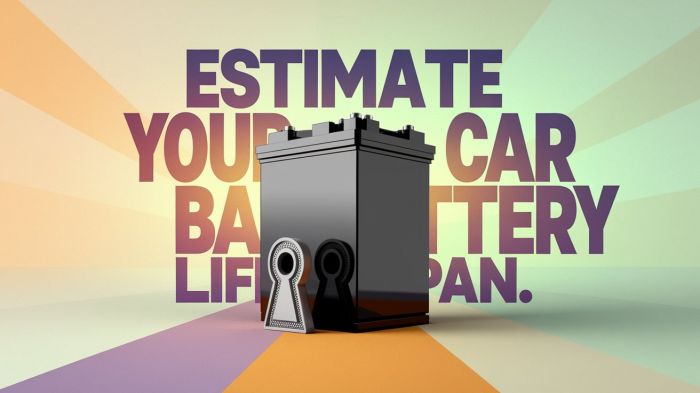Catalytic converters are arguably one of the most revolutionizing technologies invented in the past century. Gas and diesel engines both use catalytic converters, but due to the differences in how both engines operate, there are also differences in how their catalytic converters transform the harmful emissions released into less toxic gases before they're released into the atmosphere.
There's a lot of controversy around diesel engines, in particular, especially older engines which tend to emit high levels of NOx.

Decades-long propaganda has convinced many people against diesel engines, but that seems to be changing thanks to recent research that shows diesel engines may prove to be the better choice for the environment, as they have lower CO2 emissions due to their higher efficiency.
So what drove such a drastic change in direction in just the span of a few years? We believe that it has to do with the invention and improvement of two things:
- Diesel Catalytic Converters
- Diesel Particulate Filters
In this article, we'll talk about what diesel catalytic converters are, the processes that they enable, and whether they're worth what people claim they are.
Are Diesel Catalytic Converters Worth Anything?
Diesel catalytic converters, just like gas catalytic converters are an invaluable invention from an environmental standpoint. They significantly reduce the amount of harmful emissions released by vehicles worldwide.
But as you can see, they're also valuable to low-life thieves who are looking to make a quick buck at someone else's expense. So, if you're dealing with a faulty diesel catalytic converter, you should consider recycling your old cat.
Contrary to what many people think, vehicles are quite polluting even when no longer used. An EOL vehicle is still considered toxic and dangerous to the environment, and long gone are the days when you could easily get rid of your vehicle in a ditch.
The non-recyclable waste from your vehicle, such as the air-conditioning fluids, oil, and so on, need to be recovered, treated, and disposed of professionally. Still, you have a duty as a private individual to dispose of the used parts and fluids properly, however inconvenient it may seem.
Even if all you're doing is replacing the catalytic converter yourself, you must ensure the old ones are disposed of. If you dump or abandon them carelessly, you risk a hefty fine. Fortunately, there are many facilities you can send your cat to, which will gladly compensate you for your troubles.
In fact, the market for recycling cats is very well-developed in the US. Some of the precious metals contained in the cat's monolith are worth more than gold.
The monolith is reduced to powder and is then heated to extremely high temperatures in order to extract the precious metals. These metals can then be used in new catalytic converters, significantly reducing the pressure on the environment.
But, as briefly aforementioned, there are thieves who will look to get their hands on your catalytic converter, regardless of whether it's functional or not. The main targets are commercial vehicles, as it's easier to get underneath.
Catalytic converter theft is one of the main reasons why a law was passed on 29th July 2011 that makes it impossible to pay cash for ferrous and non-ferrous metal transactions. So, if someone is offering you cash for your catalytic converter and you accept - you'll expose yourself to serious fines.
Instead, find a specialist who deals in reprocessing and repurchasing catalytic converters. A simple google search with your location mentioned should bear fruitful results, and the transaction should be pretty straightforward.
Diesel Engines and Catalytic Converters
Contrary to what some people believe, most diesel vehicles are equipped with catalytic converters. However, these converters are slightly different from the catalytic converters found on gas-fueled vehicles.
Diesel catalytic converters either contain a two-way catalytic converter that features a diesel oxidization catalyst, or a three-way converter that also includes SCR reduction. Basically, diesel engine gases go through four processes before they're released into the atmosphere:
- Exhaust Gas Recirculation
- Diesel Particulate Filtration
- Diesel Oxidization Catalyst
- Selective Catalytic Reduction
So, at the very essence, diesel catalytic converters convert the harmful, toxic gases into non-toxic exhaust gases. The converters are made up of a metal casing with two ceramic blocks. Its appearance is very resembling of a honeycomb, inside which you'll find thousands of micro-cellular units. The blocks are coated with a precious metal like palladium or platinum, which is why most people recycle their catalytic converters after their useful lifespan has passed.
The unit is close to the engine, as it requires heat to begin the catalyzation processes that convert the toxic gases into non-toxic byproducts. Let's explain the four processes.
Exhaust Gas Recirculation
Exhaust gas recirculation refers to the emission reduction technique used in diesel, as well as gasoline and some hydrogen engines.
It's a process in which a part of the engine's exhaust gases are sent back to the engine cylinders in order to dilute the oxygen in the coming air stream and provide inert gases with the ability to absorb combustion heat so they reduce in-cylinder temperatures.
NOx is produced in high-temperature mixes of oxygen and atmospheric nitrogen which are present in the combustion cylinder at peak cylinder pressure.
Diesel Oxidation Catalyst
Diesel oxidation catalysts are present in every modern diesel vehicle. They're typically the first part that comes in contact with the released toxic gases from the engine. The purpose of the diesel oxidation catalyst is to transform carbon monoxide into carbon dioxide and decompose unspent fuel.
That being said, while it is the smallest unit in the catalytic converter, it's the most valuable one, since it contains the palladium and platinum, giving it a high recycling value.
Diesel Particulate Filters
Also known as DPFs, these units deal with the second polluting byproducts of diesel engines that gas engines don't create - the soot or diesel particulates.
DPFs feature a wall-flow monolith to trap the particles from the inlet side. The particles are later removed or broken down by a process known as DPF regeneration. The regeneration of the DPF is similar to the oxidation process in the diesel oxidation catalyst, as they both include burning organic materials to break down toxic fumes into CO2 and water.
Just like the diesel oxidation catalyst, DPFs feature small amounts of palladium and platinum to help the catalysis process. However, the trapped soot or particles also need to be subjected to high temperatures so they can burn up and pass through the filter walls and leave through the tailpipe.
Due to their palladium and platinum contents, diesel particulate filters are also worth considering recycling.
Selective Catalytic Reduction
This part of the catalytic converter is where the NOx gases are reduced. In conventional catalytic converters, this is done with the help of rhodium, which is another precious metal found in three-way converters, and its purpose is to convert nitrogen oxides into oxygen and nitrogen.
However, because diesel gases feature high levels of oxygen, rhodium is incapable of reducing nitrogen oxide in diesel cats. For that reason, diesel converters don't contain rhodium, but a chemical known as diesel exhaust fluid, composed of either urea or ammonia.
While the ceramic monolith still incorporates catalytic metals, they are non-recyclable. Some platinum may be found in specific SCR catalysts, known as ammonia slip catalysts. The goal of this platinum is to remove any excess ammonia from the system. The amount of platinum is so small that it's not worth recycling.
Potential Issues of Catalytic Converters
While a catalytic converter can easily last for 10 years or more, depending on how well you maintain them, as well as on your driving habits. The most common problems cats run into are contamination, clogging, overheating, and physical damage. No matter the cause, the results of a damaged or worn-down catalytic converter can be abysmal to the engine.
Although rare in the US, one of the most harmful contaminants is leaded gas, which can seriously damage the catalysts. Some other contaminants can include engine oil and engine coolant, both of which can clog the converter, preventing exhaust gases from passing through.
As you probably know, engines require a lot of oxygen to run efficiently, and if oxygen flow is restricted, it results in performance stuttering. So if your engine stops running after some time, or responds sluggishly, a clogged converter might be responsible.
Last but not least, catalytic converters are frequently stolen due to the precious metals found inside them, including rhodium, palladium, and platinum. Although the contents of these precious metals are relatively small, they still provide value to metal dealers.
About the authors
The CarAraC research team is composed of seasoned auto mechanics and automotive industry professionals, including individuals with advanced degrees and certifications in their field. Our team members boast prestigious credentials, reflecting their extensive knowledge and skills. These qualifications include: IMI: Institute of the Motor Industry, ASE-Certified Master Automobile Technicians; Coventry University, Graduate of MA in Automotive Journalism; Politecnico di Torino, Italy, MS Automotive Engineering; Ss. Cyril and Methodius University in Skopje, Mechanical University in Skopje; TOC Automotive College; DHA Suffa University, Department of Mechanical Engineering






Add comment